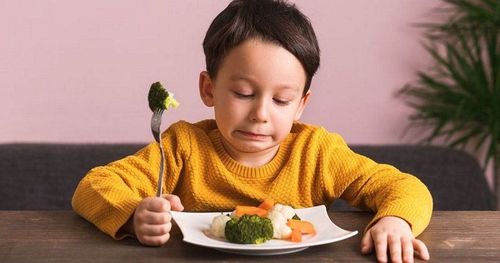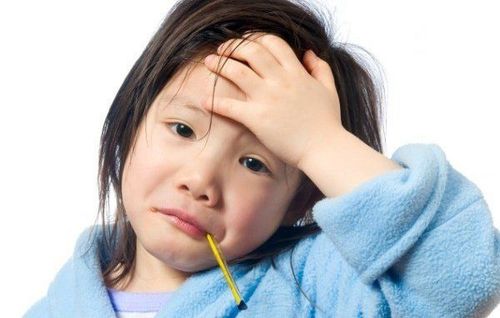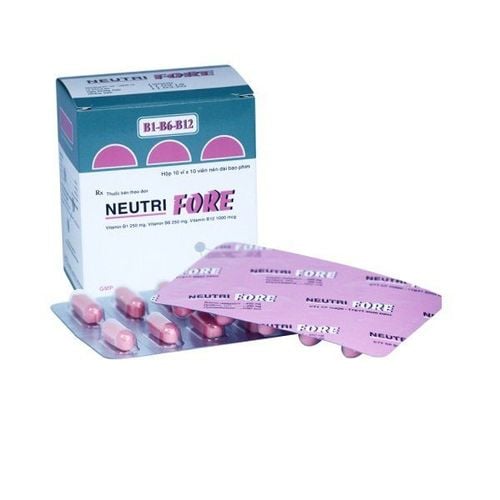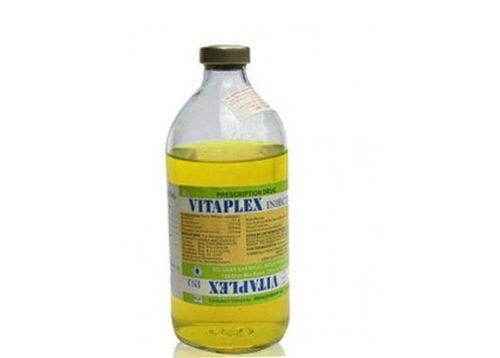This is an automatically translated article.
Children with loss of taste may reduce appetite. If left untreated, it can lead to malnutrition and other serious health problems. Food cravings can be increased with medications, supplements, and lifestyle changes. It is important to take your child to the doctor so that he or she can advise on the appropriate treatment for the child's condition.
1. What should children with loss of taste eat?
Some vitamins, minerals, herbs can be effective in stimulating appetite in children with loss of taste at the tip of the tongue, including:
Zinc: Zinc deficiency can cause taste changes sensation and appetite. Zinc supplements or multivitamins containing zinc are safe for most adults. However, for children, it is necessary to consult a doctor before use. Thiamine: Thiamine (vitamin B1) deficiency can cause increased resting calorie burn rate, decreased appetite, and weight loss in children with loss of taste. Thiamine is safe for use in adults. For children, consult a doctor before use. Fish oil: Fish oil has the effect of stimulating appetite in children with loss of taste. In addition, it also helps to improve digestion and reduce bloating. Fish oil is generally safe to use in adults who are not allergic to fish. For children, consult a doctor before use on children.

Thiếu hụt thiamin (vitamin B1) có thể làm giảm cảm giác thèm ăn ở trẻ bị mất vị giác
2. Stimulating appetite in children with therapy
There are three drugs approved by the Food and Drug Administration (FDA) for use as appetite stimulants. These drugs include:
2.1 Dronabinol (Marinol) Dronabinol is a cannabinoid drug, which means it acts on cannabinoid receptors in the brain. Dronabinol helps relieve nausea and stimulates appetite. It is commonly used in people with reduced appetite due to HIV and chemotherapy. For young children, there are no studies to determine the level of safety when used.
2.2 Megestrol (Megace) Megestrol is a synthetic progestin that stimulates appetite and is used to treat anorexia caused by loss of taste or cachexia (Cachexia). Cachexia is severe weight loss associated with chronic medical conditions.
Megestrol can be prescribed for children. However, it should be used with caution because the drug has a side effect of hormonal changes and causes blood clots.
2.3 Oxandrolone (Oxandrin) Oxandrolone is a synthetic testosterone derivative that stimulates appetite and promotes weight gain similar to anabolic steroids or natural testosterone in the body. It is commonly prescribed to support increased appetite and weight gain in the following cases:
Severe trauma Infection Surgery. A side effect of Oxandrolone is a change in cholesterol levels. This can increase the risk of atherosclerosis.
2.4 Other drugs Some other drugs that are also used to stimulate appetite but have not been approved by the FDA include:
Antidepressants Anticonvulsants Antihistamines Some antipsychotics Steroids.
3. Lifestyle changes to stimulate appetite
Besides supplements and drugs, lifestyle changes are another option to stimulate appetite in children with taste loss. The following changes can help children:
Change in family behavior: Family tensions, parental expectations, threats, pressure can have a negative impact on children's eating small. Feed your baby often and in small portions throughout the day Offer your baby a variety of foods and textures from an early age, usually starting at about 6 months. Make mealtimes more interesting by asking your child to show an interest in his or her life. Even if children don't have enough vocabulary to talk, feeling cared for can help them be more excited during mealtime. Eating together with enough family members regularly helps form positive eating behaviors in children. Don't let distractions interfere with your child's meals, such as TVs, phones, and toys on the table. Limit time at the table to about 20 minutes at each meal. Make sure your child gets enough exercise and play. Limit excessive snacking and drink milk and juice between meals.

Không để trẻ vừa ăn vừa xem tivi, điện thoại là một cách giúp kích thích cảm giác thèm ăn ở trẻ bị mất vị giác
4. Daily calorie needs of children by age
Daily calorie requirements vary based on several factors such as activity level, genetic makeup, metabolism, body type. Below is a general guide to the average calorie needs by age group in children.
| Nhóm tuổi | Nhu cầu calo hàng ngày cho bé gái | Nhu cầu calo hàng ngày cho bé trai |
|---|---|---|
| Trẻ mới biết đi ( 2 - 3 tuổi) | 1000 - 1400 | 1000 - 1400 |
| Trẻ em ( 4 - 12 tuổi) | 1200 - 2200 | 1400 - 2400 |
| Thanh thiếu niên ( 13 - 18 tuổi) | 1600 - 2400 | 2000 - 3200 |
5. When should an anorexic child go to the doctor?
You need to take the child to the medical center as soon as the symptoms:
Loss of appetite for a long time Losing weight Have symptoms of nutrient deficiency, including fatigue, hair loss, weakness , dizziness or loss of muscle mass There are other symptoms that you find concerning. In the case of children with prolonged anorexia, malabsorption and growth retardation, parents should supplement children with supportive products containing lysine, essential micro-minerals and vitamins such as zinc, chromium, selenium, and B vitamins to help meet the nutritional needs of children. At the same time, these essential vitamins also support digestion, enhance nutrient absorption, help improve anorexia, and help children eat well. Parents can simultaneously apply dietary supplements and functional foods derived from nature for easy absorption. The most important thing is that improving your baby's symptoms often takes a long time. The combination of many types of functional foods at the same time or continuously changing many types in a short time can cause the baby's digestive system not to adapt and completely not good. Therefore, parents must be really patient with their children and regularly visit the website vimec.com to update useful baby care information.
References: Healthline.com, Winchesterhospital.org













